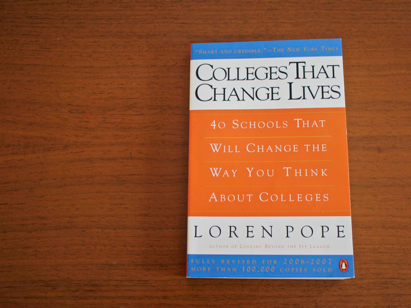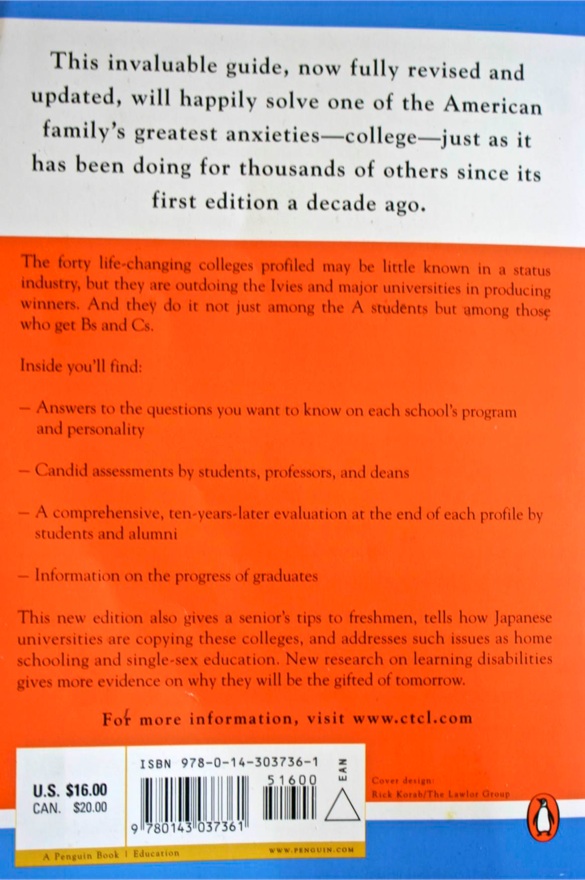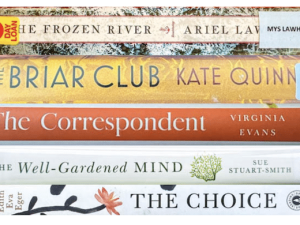
This is a book more people should read. I give it five stars.
My oldest daughter read it in high school and ended up attending one of the 40 schools featured here. Her school, St. John’s (click here), which I had not heard of before, is already an enormous blessing even though she’s only half way through. She is having such a unique and potent experience that would not have been possible at a school less focused on the big eternal questions so important to her. It has been a good fit for her, and she is being very productive, challenged and successful there. When your kid tells you that she “wouldn’t want to be anywhere else,” it is music to a parent’s ears.
My college experience at the University of Michigan was not a good fit for me at all. My parent’s approach was I could go anywhere as long as it was there, where they went. But I was lost in the enormity of 50,000 students, feeling like a number and a blurred face in the mob. Most of my teachers were teaching assistants who could not speak English. I was not interested in football nor sorority rush. The disconnect was both demoralizing and discouraging for me. I was not engaged in learning but I suffered through what should have been a pivotal and engrossing time. I can only imagine what a wonderful college experience would be like; I feel sorely the lack of what I missed. But I do know I don’t want that for my kids.
I’m very interested in helping my children find a learning environment, that best meets their goals, interests and temperament. Homeschooling has been part of this, but the college application process is also a critical time for discernment. One of my goals this year is to help my son navigate this bewildering process to find the place, the style and the content that will induce him to thrive the most.
I had not read this book until yesterday, having extra time due to a twenty inch dump of new snow. I am so glad I did. There are colleges out there that will not only accept your kids but encourage them beyond the confines of what they thought they could do. There are colleges that can better prepare them for life or grad school than the elite ivy’s, giving them more research opportunities, more real instruction and more support. Giving up a tad of temporary prestige for some genuine enduring substance doesn’t seem like much of a trade off to me.
It is not yet clear whether my son will choose to go to Engineering School or to a Liberal Arts School. This book only covers small liberal arts schools. However, given the reasoning laid out in this book, the only Engineering Schools he’s interested in are the non-traditional innovative ones, now that he understands what a gerbil wheel most of traditional schooling is, spitting out coeds like faceless factories. And the liberal arts schools he’s most excited by are represented in this book, even though we’ve never heard of them before. He will probably also apply to some big name schools, but after reading this book, one is dubious over what will be the benefit of that, except to stroke his ego a bit.
This book offers practical encouragement that there are better alternatives than the Ivy League and State Schools while offering up compelling arguments regarding the benefits of those alternatives.







